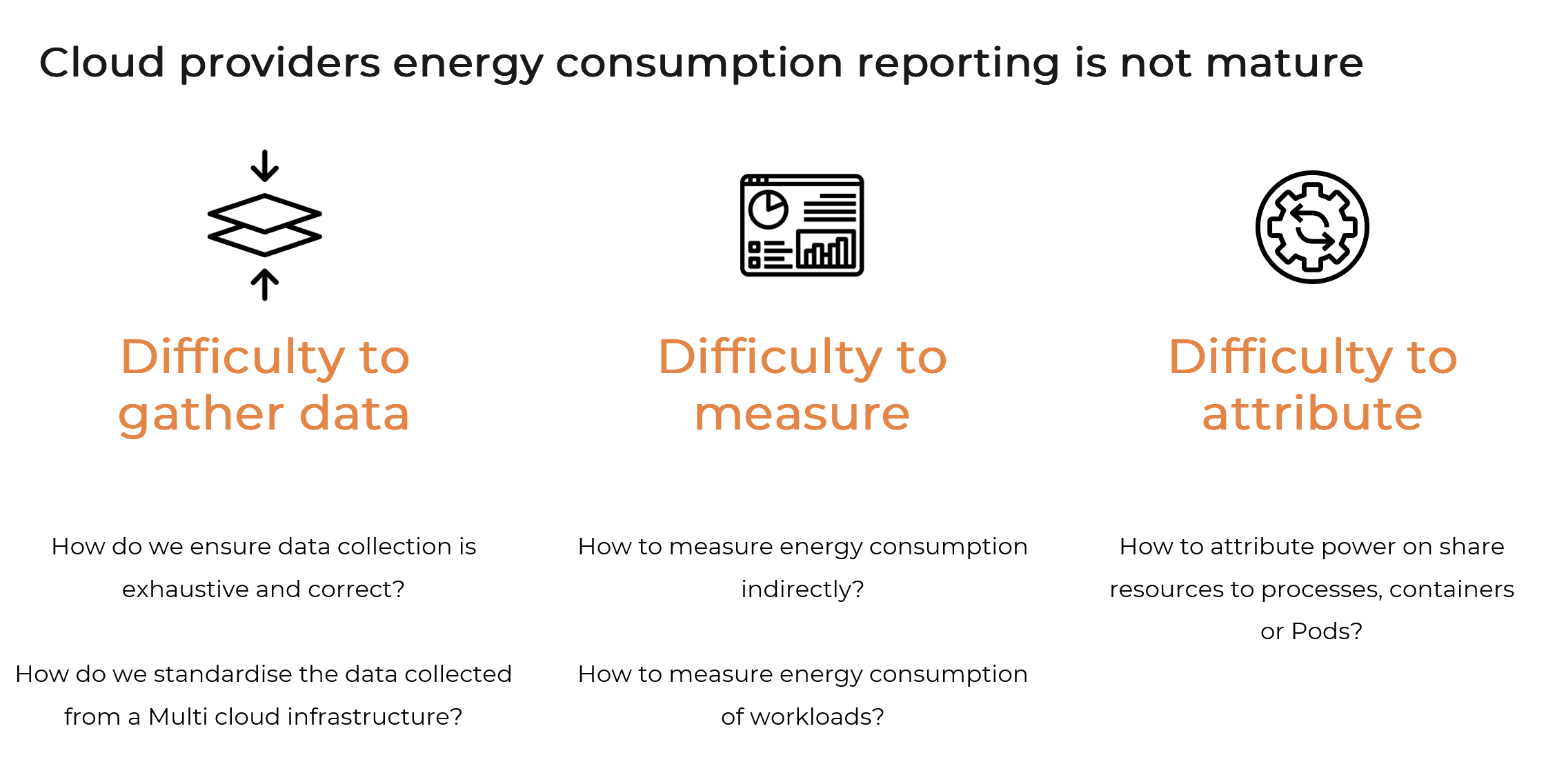Addressing the Environmental Impact of Digital Technologies
Digital technologies currently account for 4% of global carbon emissions, and this figure is rapidly growing at 8-10% annually. This trend, if unchecked, poses significant challenges, especially with the rising energy consumption of data centres and AI technologies. Governments are increasingly requiring companies to report on their energy consumption, further emphasising the need for effective solutions.
The Challenge of Measuring Energy Consumption
One major challenge is the lack of transparency and standardisation in measuring energy consumption, especially in cloud environments. This opacity makes it difficult to assess indirect energy consumption and allocate resources accurately. When using multiple cloud providers, aggregating data into a single standard becomes a complex task. Additionally, the prevalence of virtual machines in cloud environments makes it challenging to directly measure the energy consumption of specific workloads and applications.

Introducing Kepler: A Monitoring Tool for Kubernetes Clusters
This is where Kepler, a monitoring and observability tool, comes into play. Kepler is an open-source project supported by the Cloud Native Computing Foundation (CNCF), with contributions from major industry players like Red Hat, IBM, and Intel. It helps measure and estimate the energy consumption of Kubernetes clusters, offering insights for sustainability reporting and workload optimisation.
Kepler is a set of components, with the Power Exporter being the focus of the demonstrations. It can measure and estimate energy consumption at the node, pod, and container levels, providing visibility into power usage patterns. By capturing and correlating data from hardware resources and energy consumption, Kepler enables organisations to understand the energy footprint of their Kubernetes-based applications and infrastructure.
Optimising Application and Platform Power Consumption
Kepler's power metrics can be leveraged in various ways to optimise power consumption. At the application level, the metrics can help identify the most energy-efficient frameworks, such as the Quarkus framework, which was demonstrated to have lower CPU and memory utilisation compared to a Spring-based application under the same workload.
At the platform level, Kepler's power metrics can be used to intelligently schedule workloads on the most energy-efficient nodes in a Kubernetes cluster. This can be achieved through the use of machine learning models or custom schedulers that consider real-time power consumption data.
Kepler can help organisations:
📊 Gain unprecedented visibility into the energy consumption of individual containers and Kubernetes Pods
🔍 Have a comprehensive understanding of the energy footprint of each workload through monitoring counters, scheduling parameters, and system configurations
🗓️Make informed decisions about workload scheduling and configuration optimisation
🏆 Achieve substantial energy savings through its granular monitoring
🌱 meet their sustainability goals without compromising performance or efficiency
Conclusion
Kepler's power metrics enable organisations to make informed decisions about application modernisation, cloud adoption, and sustainability initiatives. By providing visibility into energy consumption and empowering optimisation strategies, Kepler helps organisations reduce the environmental impact of their digital technologies and meet regulatory reporting requirements.
Talk to us to learn more about how PALO IT can help your organization achieve the best of both worlds - cost savings and sustainability - through the power of Kepler's energy monitoring and optimisation capabilities.